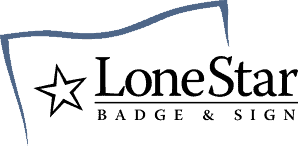Understanding your company’s unique fingerprint in the competitive landscape involves recognizing your corporate identity. Comprised of your company’s mission, actions, communication, and—crucially—elemental design, corporate identity is the foundation on which your reputation is built. This is more than just the quality of products and services you offer—it’s about the emotions and impressions your target audience associates with your brand. This encompasses your logo and color schemes to tailored items like custom name tags.
Taking a deep dive into the world of corporate identity formation, unveiling the reason behind the reliance on specific visual elements, and the expertise offered by professional businesses such as LoneStar Badge, this guide will help you navigate the fascinating journey of visual branding.
The Three Pillars of Corporate Identity: Design, Communication, and Behavior
A well-defined corporate identity distinguishes your brand from the competition, creates a cohesive impression, and lays down the blueprint for all your business’ marketing efforts. In essence, corporate identity forms the framework that influences perception, evokes emotions, and establishes credibility among customers and stakeholders. The all-encompassing term ‘corporate identity’ can be dissected into three crucial sectors: corporate design (logos, colors, fonts), corporate communication (public relations, advertising, information dissemination), and corporate behavior (values, culture, norms).
Corporate Design: A Soothing Symphony of Visuals
Visual branding is an integral part of corporate design and serves as the first line of engagement with your audience. The effectiveness of corporate design hinges on its ability to create an emotional connection, establish brand recognition, and project your brand’s message coherently across all platforms and touchpoints.
The Power of a Logo
An essential representation of your brand, the logo, should encapsulate your brand’s essence and unique selling points through interesting and recognizable visuals. Imagine the logo as a passport that grants seamless entry of your business into the hearts and minds of customers—the reason it should be both distinctive and flexible. Whether it appears on business cards, letterheads, brochures, websites, marketing materials, or even name badges, your logo must inspire immediate familiarity and pique curiosity.
Color: The Silent Communicator
Color psychology is an often underestimated aspect of branding and perception. Known to evoke different emotional responses, every hue on the spectrum exudes its unique energy and message. For instance, blue engenders trust, red sparks excitement, and green kindles calmness. Nail down your brand personality and align it with the right color scheme to weave a compelling visual narrative that vests your company identity in the minds of your customers.
Corporate Communication: The Bridge Between Brands and Customers
The second pillar of corporate identity, corporate communication, is the spokesway on which your brand connects with its target audience. It encompasses all types of interaction between your company and its customers, employees, investors, and media through public relations, advertising, and information dissemination. When synergy prevails between corporate design and communication, a recognizable and consistent brand image emerges.
Corporate Behavior: Crafting Your Brand’s DNA
The third and final component of corporate identity is corporate behavior, which encompasses your company’s values, culture, and norms. It defines your organization’s internal environment, attitude toward employees, social responsibility, and ethical conduct—a vital player in forming your brand’s character. When all three pillars—design, communication, and behavior—act in concert, they form a cohesive corporate identity that reinforces the connection between your brand and its audience, influencing perceptions, trust, and profitability.
By appreciating the role of corporate identity and its multifarious dimensions, you are better positioned to develop and implement a strategy that aligns your design, communication, and behavior efforts. Creating a distinctive and consistent brand identity will enable your business to stand out in a saturated market, establish long-lasting relationships with your customers, and generate sustainable revenue growth.
Personalized Corporate Essentials—Name Plates and Badges
Moving beyond the abstract and intensifying the physical ties of corporate identity are visual anchors such as custom name plates and badges. These fundamentally utilitarian components double as a representation of your commitment to professional identity. They facilitate interpersonal communication, heighten workplace security, and infuse professionalism into the everyday workspace.
Achieving Visual Cohesion: A Dance Between Unity and Diversity
An efficient visual identity steers clear of contradictions and binds all visual elements under a unified theme. Distinctive unity signals your business’s understanding of professional consistency that discerning customers appreciate, translating into implied trust and dependability. In fact, research shows that design consistency can trigger an increase in revenue by reinforcing brand recognition.
Incorporating your logo, color scheme, and other visual identity elements harmoniously into your workplace allows your physical space to echo your brand philosophy. This embedding can be accomplished with custom signs and badges, converting your office into an extension of your brand.
Simultaneously, your visual branding creates a cohesive environment for your staff as much as your physical space. Investing in extendable identity elements like reusable name tags, which can be adorned by team members, diversifies the visual identity impact while reinforcing team unity.
However, the pursuit of cohesion mustn’t undermine the power of innovation. Create branding guidelines that harmonize all communication and designs but avoid choking creativity with excessive stringency. The goal is a balanced culmination of cohesion and novelty, each component smoothly fuelling the holistic impression.
Professional Guidance: Making or Breaking Corporate Identity
Steering all these elements in a symphony that sings your brand’s story requires professional assistance. Organizations like LoneStar Badge specialize in exactly that, mastering the art of steering corporate identity crafting. The expertise of LoneStar Badge encompasses both the micro-level details and macro-level picture of corporate branding, which is evident from their clientele’s high percentage of repeat orders, reflecting the exceptional service and product quality the company provides.
In the end, creating a distinct visual identity isn’t an overnight task; it’s a journey that involves strategizing, incorporating, and resonating with your target audience with the right tools in hand. LoneStar Badge stands as a testament to businesses understanding the power of tangible branding materials that help seal their corporate identity in their audience’s minds.
Traversing the path of visual branding may initially appear a daunting task. However, by empathizing with the principles behind corporate identity and partnering with seasoned professionals, you can carve a unique identity that resonates with your target audience. Remember, your corporate identity is a paragon of an entire history, current achievements, and future aspirations—it’s more than an emblem; it’s a wholesome experience you offer the world. Ensuring it remains cohesive, consistent, and innovative should be your fundamental branding aim.

